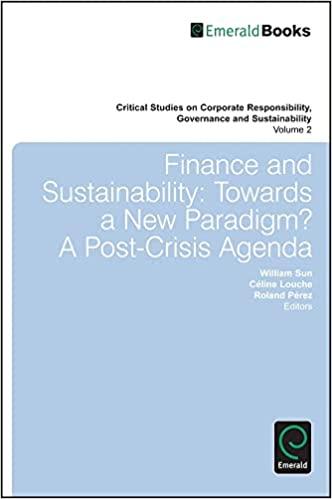Question
Question 2 (40 marks) The process of international capital budgeting becomes more complex when dealing with international operations. The complexity arises from; foreign currencies, foreign
Question 2 (40 marks) The process of international capital budgeting becomes more complex when dealing with international operations. The complexity arises from; foreign currencies, foreign exchange exposure, foreign government regulations and additional risk factors. Springerville Ltd, with its headquarters in Durban, are considering of a four year investment in Argentina. For this purpose, a subsidiary company, Jumperville SRL (Argentinian equivalent of (Pty) Ltd), will be incorporated to execute the project (as well as future intended projects). The Argentinian currency is the peso (currency symbol is $). The investment will require, in Argentinian peso terms ($), the purchase of: Equipment $13.05 million Cost to import and install equipment from Brazil $1.45 million An existing factory building $7.25 million Initial working capital $4.35 million In return the project is expected to generate the following cash-flows: Year 1 2 3 4 Revenue ($000) 108 750 125 060 144 000 165 400 Operating costs ($000) 90 600 100 000 109 000 120 500 Terminal cash-flow ($000) 7 250 The following relevant information was obtained regarding the investment in Argentina: New equipment, for tax purposes, is written off as follows: 40% in year 1 and 20% in next 3 years Used factory buildings, for tax purposes, is written off as follows: 25% per year There is full remittance (i.e. transfer and payment) of dividends, investment capital on repatriation and approved fees for management, licenses, royalties and any other similar obligations. Both local and foreign investors have unrestricted access to local financing facilities. The corporate tax rate of Argentina is 28% and a withholding tax on both dividends and management fees of 15%. Springerville Ltd will charge Jumperville SRL a management fee of 1.5% of annual sales. This is not included in the operating expenses provided above. Jumperville SRL is planning to remit all dividends and management fees that are remittable in the given period. The project will be financed by 65% equity and 35% loan capital. The loan capital will be raised in country Argentina at an interest rate of 15%. Jumperville SRL will pay annual interest for 4 years and repay the principal at maturity in year 4. Springerville Ltds cost of capital is 19%. The remitted cash flows and equity investment in the project will be assessed at a higher rate of 21% given the additional economic and political risk of the project. Dividends received from foreign operations are taxed at 20% in South Africa. The corporate tax rate for South African companies is 28%. The following forecast exchange rates, expressed as $ : R1, have been made available: Year Actual Forecast Present $8.32 1 $8.76 2 $9.24 3 $9.79 4 $10.40 REQUIRED MARKS a Perform the following initial calculations, as required by Jumperville SRL, to assess the viability of the project in peso ($) terms i The total equity and total debt financing required for the proposed project; 5 ii Jumperville SRLs weighted average cost of capital (WACC) to be applied to assess the viability of the project in Argentinian terms; and 2 iii The total tax allowances that will be allowed in year 1 and year 2, when assessing the viability of the project in Argentinian terms. 2 b Based on the calculations performed in part (a), evaluate the viability of the four-year project in peso ($) terms. Assume a weighted average cost of capital of 19% per annum for purposes of this evaluation; 13 c Part (b) above represents the first of three stages of cash flow analysis when dealing with exchange rates and inflation, for evaluation of a project in a home country (i.e. to convert remitted cash-flows by the project into a parent company currency). Perform the necessary 8 calculations and complete the second stage of measuring the overall viability of the project, applying ay assumptions made to date. d Briefly explain the procedures of the final stage (i.e. stage 3) to be applied to the results obtained in part (c) above. 8 e List risks dealt with in the approach applied throughout the process above. 2
Step by Step Solution
There are 3 Steps involved in it
Step: 1

Get Instant Access to Expert-Tailored Solutions
See step-by-step solutions with expert insights and AI powered tools for academic success
Step: 2

Step: 3

Ace Your Homework with AI
Get the answers you need in no time with our AI-driven, step-by-step assistance
Get Started


